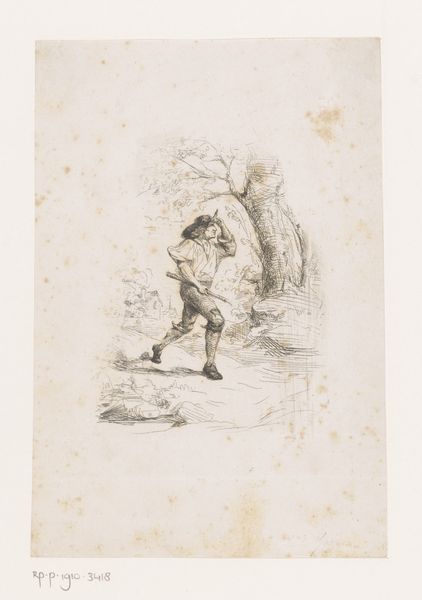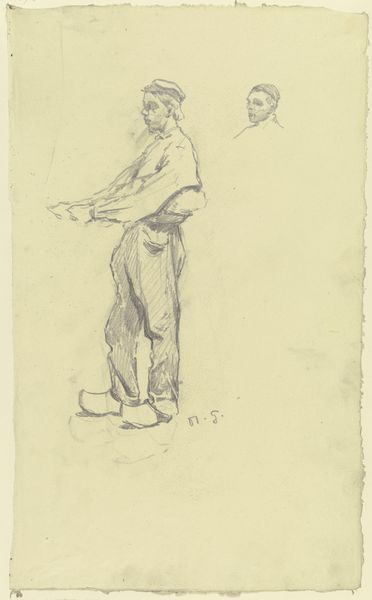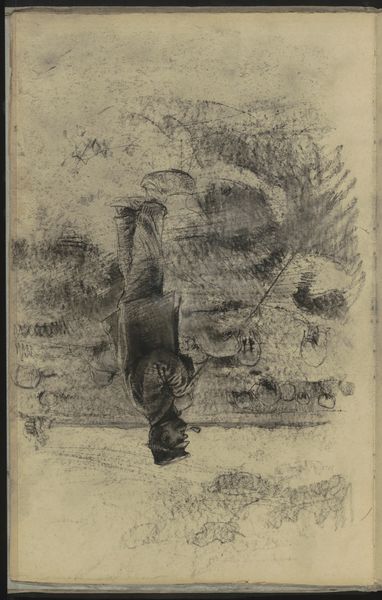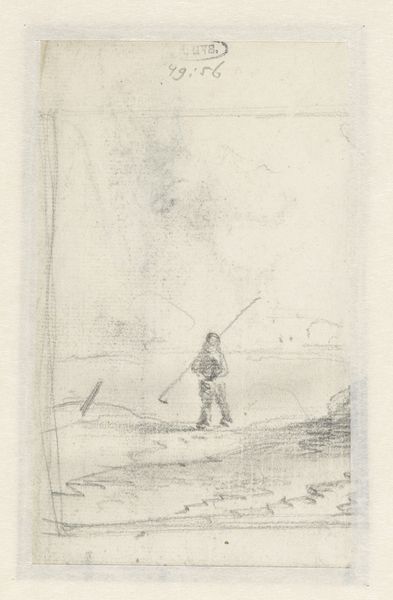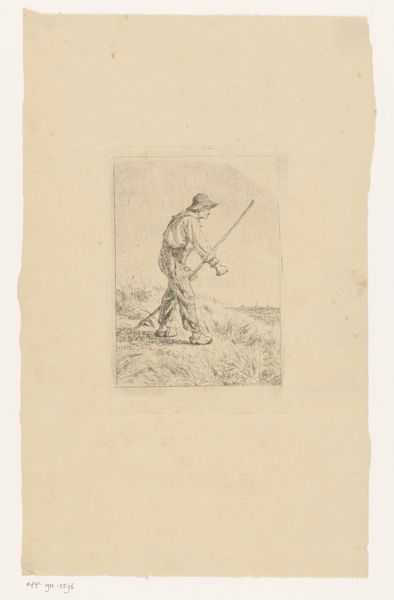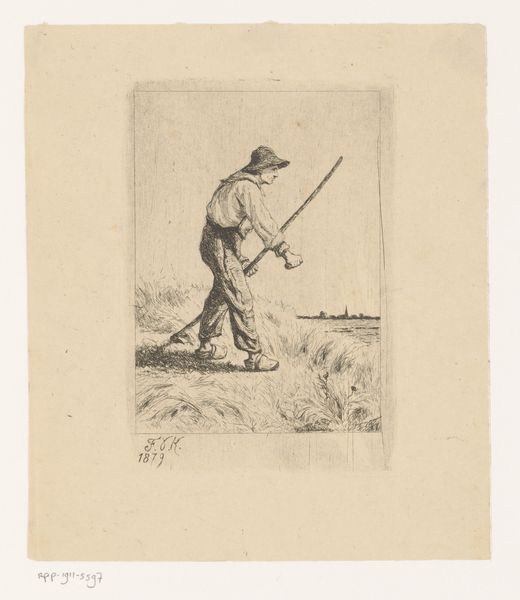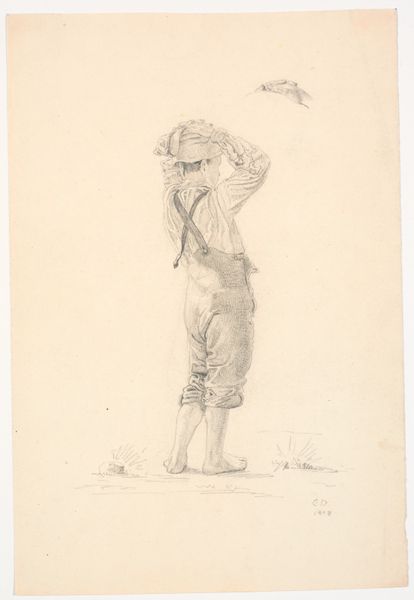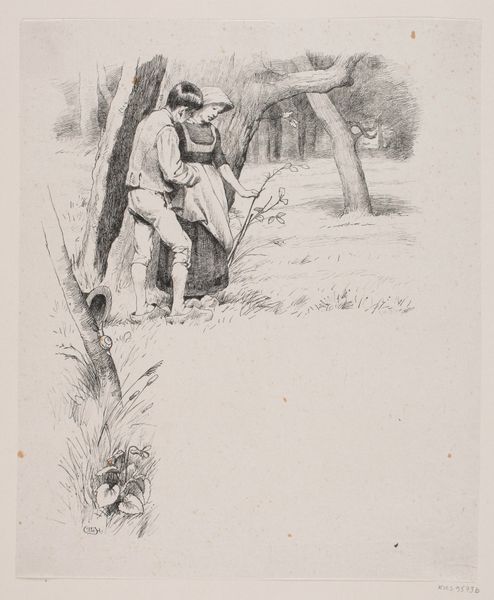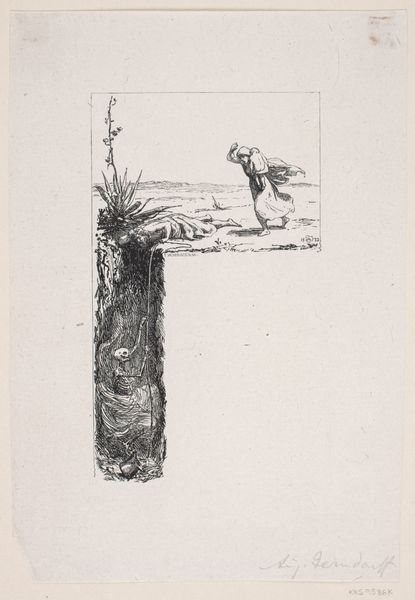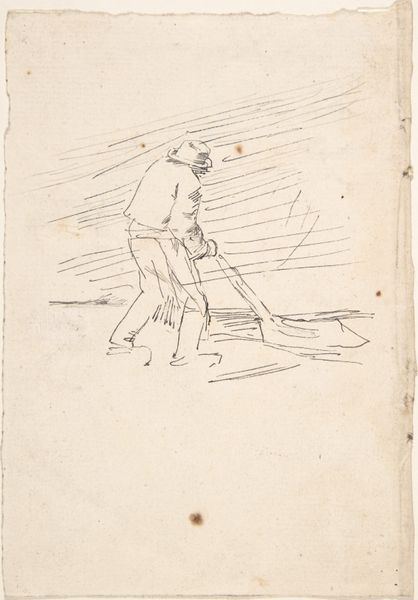
drawing, paper, pencil
#
drawing
#
landscape
#
figuration
#
paper
#
pencil
#
genre-painting
Dimensions: height 101 mm, width 158 mm
Copyright: Rijks Museum: Open Domain
Curator: Here we have "Uitgespannen paard," which translates to "Un-spanned Horse," a pencil drawing on paper by Johannes Tavenraat. It's dated sometime between 1840 and 1880 and belongs to the Rijksmuseum collection. I find the scene very poignant, despite its simplicity. Editor: Poignant is right. Immediately, I see a sense of weary travel and resignation, two figures walking, maybe an old couple in matching bonnets laboring over uneven land. You feel for them, whatever the reason. Curator: Well, Tavenraat was very interested in genre scenes and landscape, portraying everyday life. I believe the original title might be a slight misnomer as it pictures two walking people, unless the title hints to a wider social landscape regarding burden and hard labour. It really captures a specific type of rural experience. Editor: I am especially intrigued by the minimal treatment of the environment. The artist's pencil line becomes the wind itself, doesn't it? This sparseness, paired with the heavy clothing and stooped postures, emphasizes the struggle in each step. Their world feels unforgiving, rendered through each bleak, purposeful stroke. Curator: Yes, exactly. This drawing exemplifies a tension in 19th-century art production between idealizing pastoral life and documenting the often harsh realities. By positioning working people, it gestures towards representing broader social truths. Notice the stark lighting on the figure's back, or the face shadowed, almost swallowed, by his large brim. Editor: But it is their silent forward movement, however trudging and fatigued, that is, paradoxically, beautiful. One cannot look away. It reminds me that even in depictions of everyday people during times of ordinary suffering, an artist can touch on universal conditions, the core of perseverance and even hidden resilience in the plainest circumstances. Curator: And understanding the political role of representation in the 19th century enriches our understanding here. Tavenraat encourages consideration not only for the labor itself but also of the person doing the labor, the socio-economic value of the model within a cultural framework that may disregard their humanity. Editor: A subtle reminder that our perspectives today are filtered through historical forces as well. And even more reason to respect art’s lasting echoes. Thank you for enlightening my wandering musings today. Curator: And you, for the wonderful emotional analysis.
Comments
No comments
Be the first to comment and join the conversation on the ultimate creative platform.

